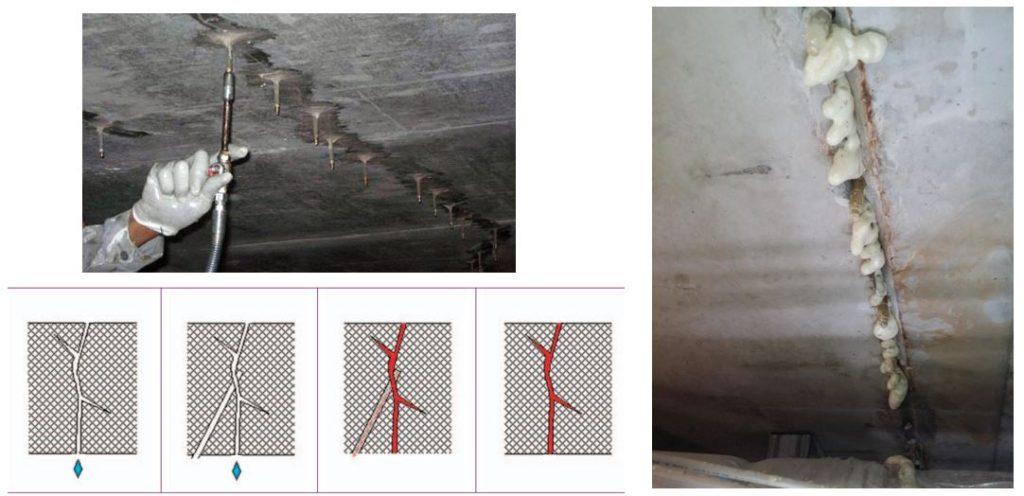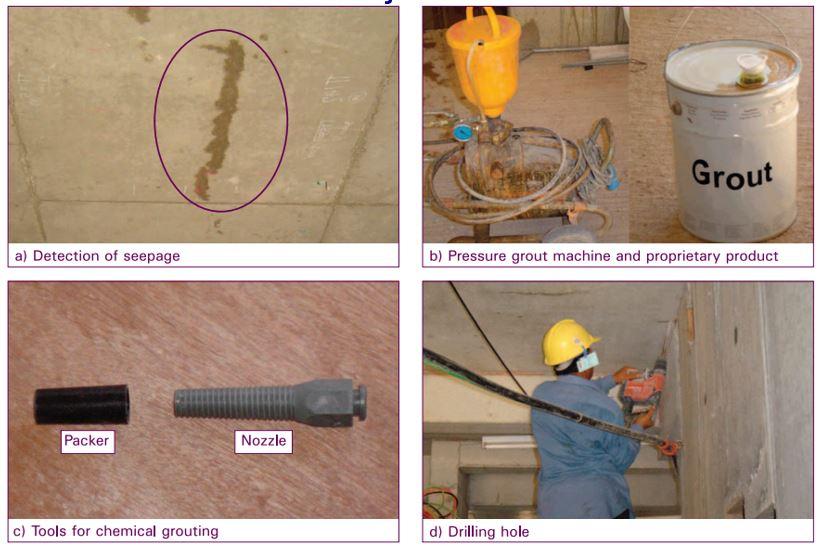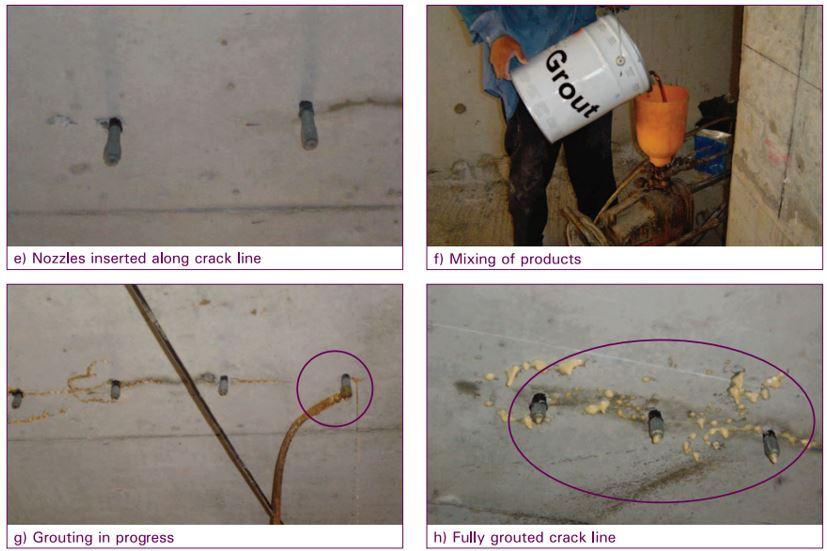Polyurethane (PU) Injection
Repair using polyurethane injection
Polyurethane (PU) grouting is specially designed for providing water control in static joints or cracks in concrete structures. The grout material, when mixed with a certain amount of accelerator, will react with water or moisture and expand to form a tough, closed-cell rubber that is essentially unaffected by corrosive environment.
Polyurethanes are products of the petrochemical industry. They are very durable when exposed to external conditions and retain their gloss well. They can be obtained as elastomers, solid and rigid materials or flexible coatings. Major cracks or localized porous concrete can be repaired by this method.
In the application, PU reacts upon with the water in the slab and expands its volume and thus fills the cracks or pores in the slab. Therefore, it acts as a sealer over the cracks. The repairing process can be completed within half a day. Accelerator agents can be used to speed up the setting time of the grout. A finishing coat may be applied after the remedial work is completed.



Seal up the leakage
It is possible to use polyurethene grout injection. It will seal up the holes and cracks in the concrete as well as seal up the passage of water from the soil.
1. Hack to expose the concrete around the area that is affected to look for cracks of defective concrete.
2. Drill holes approximately a foot apart along the crack to install the Packer.
3. Wet the area around the defects so that it is easy to clean when the excess chemical is dried.
4. Pump the chemical in the concrete through the packer until it overflows.
5. Allow one hour for drying up before removing excessive chemical with scraper and patch up the holes with cement mortar.

Replace failed Waterstop around existing Pipe Penetrations
(1) Hack old grout or deteriorated concrete from the circumference of the pipe penetrations until sound area is found.
(2) Clean to remove grease and dirt using a wire brush, air blower, or vacuum cleaner to eliminate any remaining dust or loose particles. Provide surface preparation to receive the new waterstop or grout according to the specification of the supplier..
(3) Installation of the repair products according to the specification of the supplier.